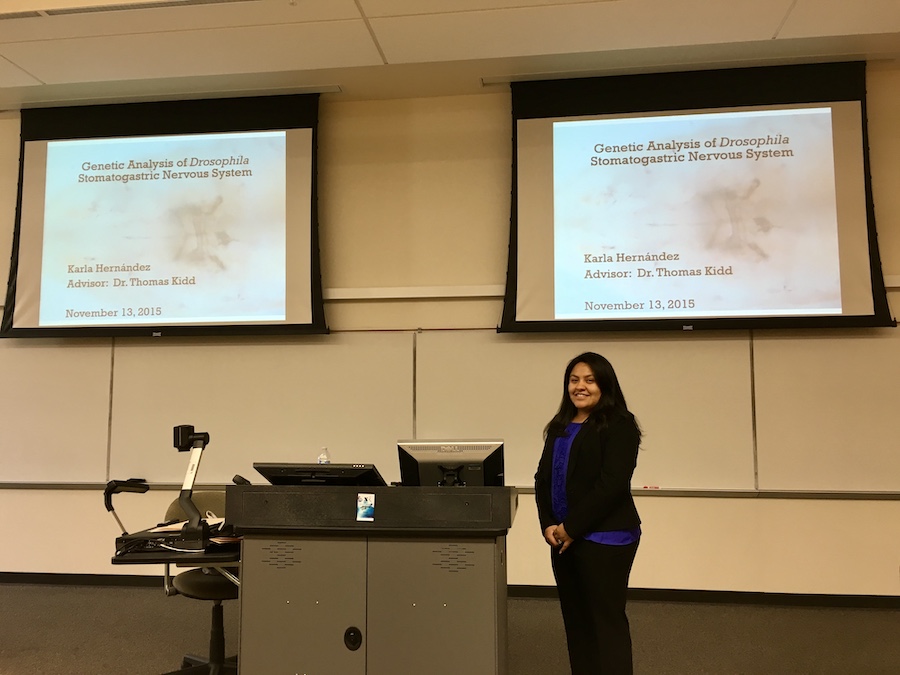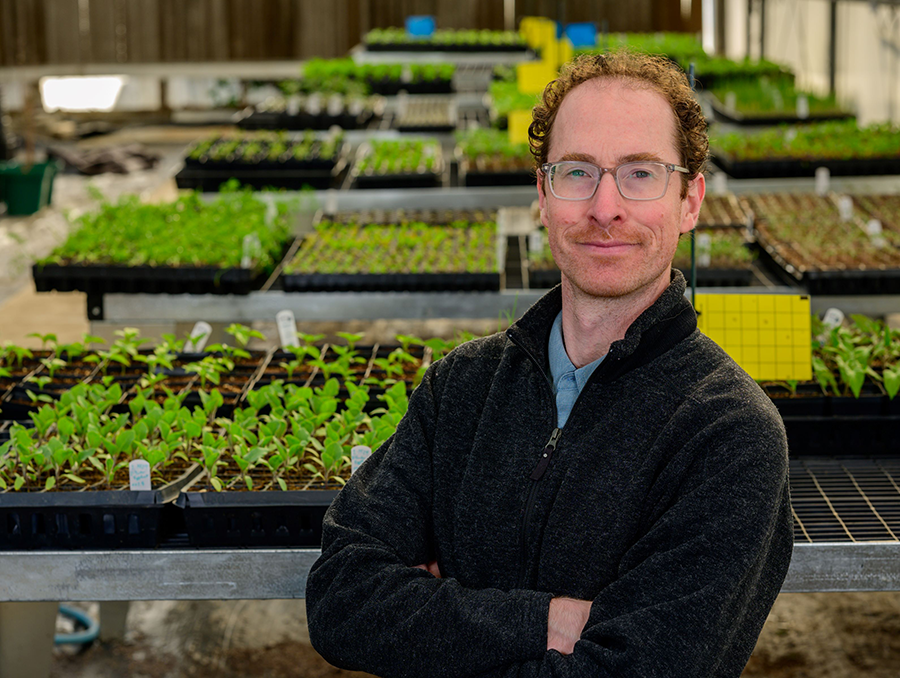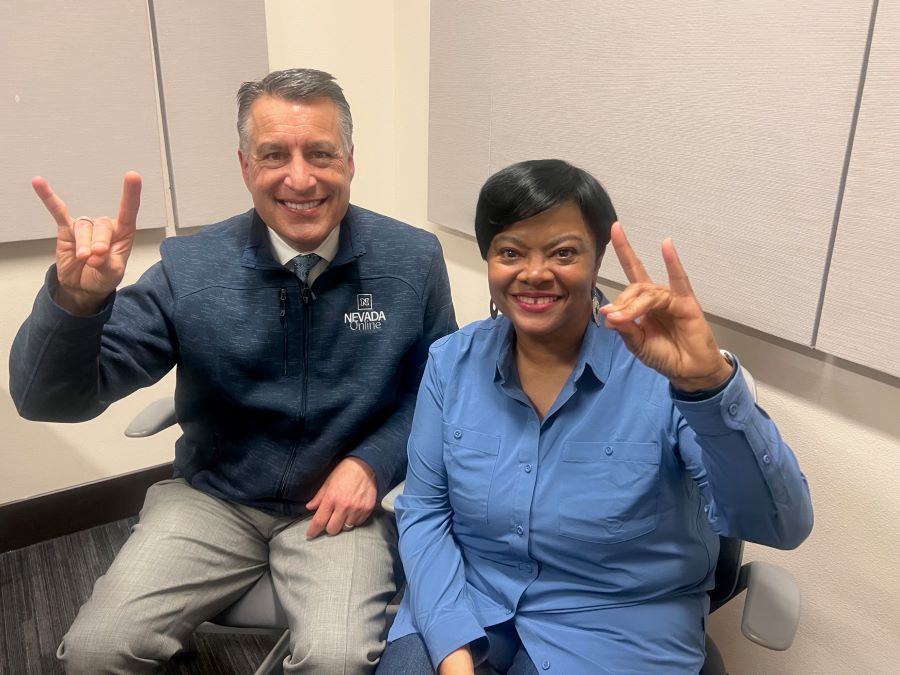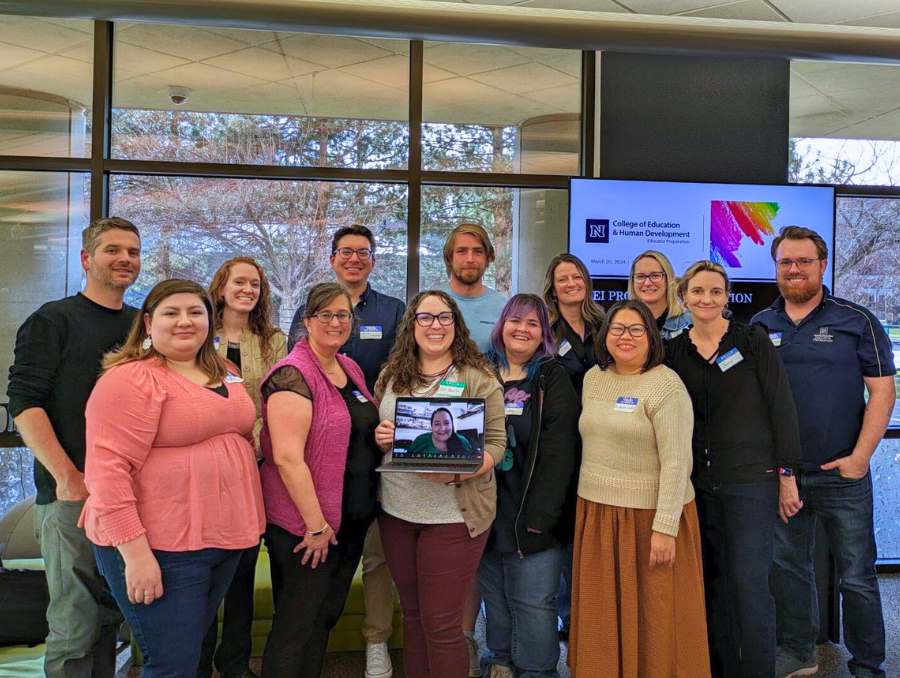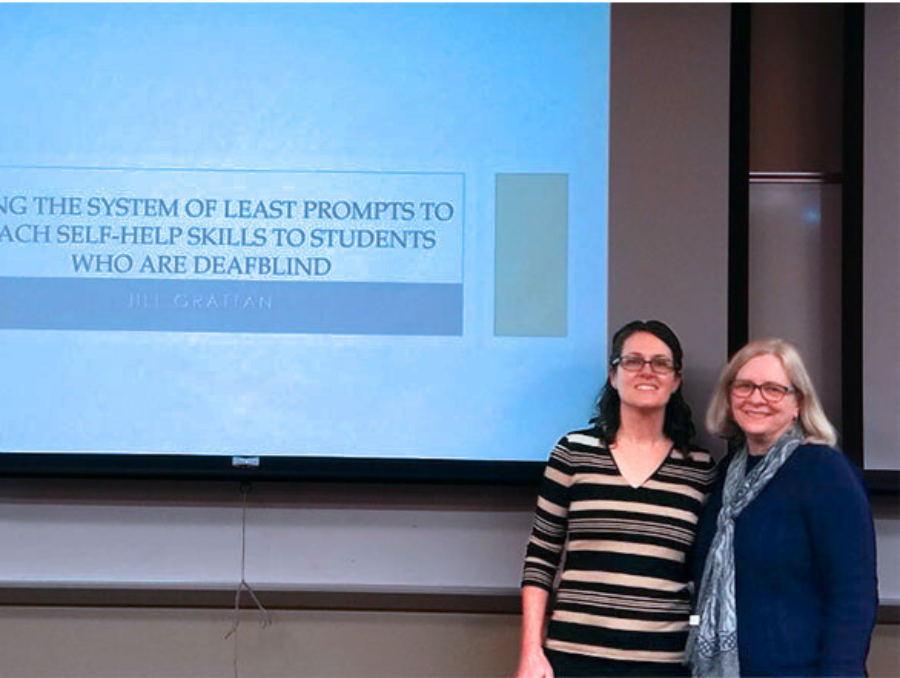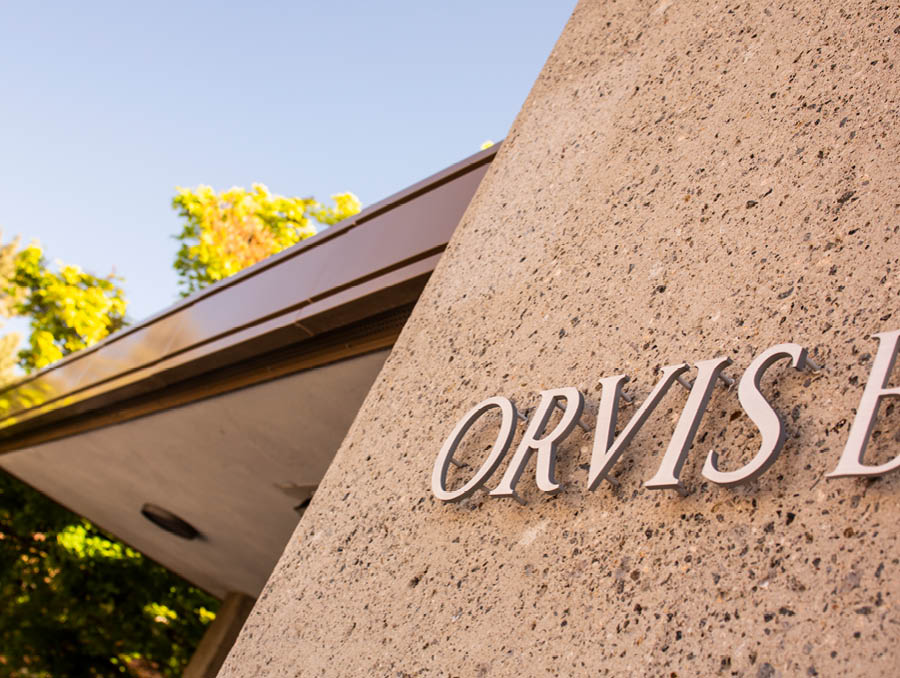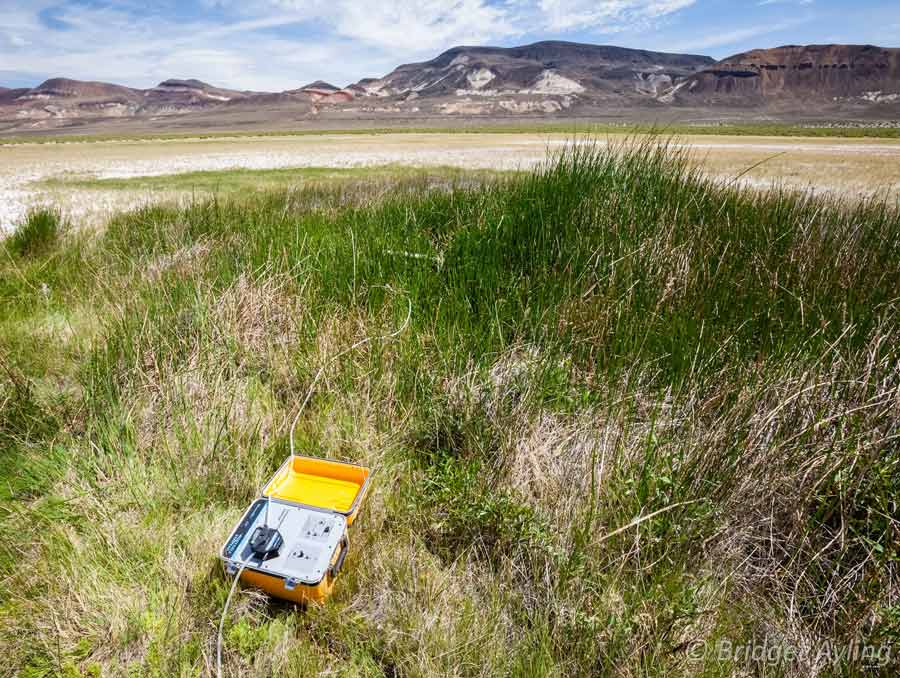"This week's work is the first step toward giving the world a knowledge of Nevada, and it is a giant stride, too, for it will provoke earnest inquiry. Immigration will follow, and wild-cat advance."
Mark Twain in a letter published in the Territorial Enterprise, Nov. 7, 1863, praising Nevada Territory's push toward statehood.
When Mark Twain made his immigration prediction, the Nevada Territory had a population of just a few thousand. That number would grow about tenfold by 1880, as the Comstock lode became a magnet for the state's first flurry of flockers.
By 2005, the Census Bureau estimated, the Silver State had grown to more than 2.4 million—with almost all of those attracted to Nevada heading for the vicinity of Reno and Las Vegas. Nevada's population has climbed more than 20 percent just since 2000 and is likely to grow another 40 percent by 2012, according to State Demographer Jeff Hardcastle with the Nevada Small Business Development Center, located on the campus of the University of Nevada, Reno.
Snowball in the desert
Sustained growth such as Nevada is experiencing creates its own momentum. as new residents establish themselves, they push up the demand for services such as schools, shops, gas stations and restaurants. There aren't enough local workers to fill this demand, so more people flood in, having heard that work can be found here.
This dynamic is particularly strong in Las Vegas, which creates 80 percent of the state's new jobs. Several major hotel-casino expansions are underway or imminent on the Strip, the famous four miles of Las Vegas Boulevard South that is home to some of the world's largest casino, hotel and resort properties.
The latest projects will add about 40,000 rooms in the next four years, says Hardcastle, and the rule of thumb is that each room creates 2 1/2 direct and indirect jobs. in the past 10 years, eight major casinos have opened. each has added as many as 9,000 new jobs.
Many of the people who move to Las Vegas to fill these jobs have young families. That strains school systems and other community services.
"In the last 10 years Las Vegas has built more than 100 new schools," says Leah Marchione of the Clark County School district. "We're opening 11 or 12 new schools a year."
The schools are Clark County's largest single employer with a payroll of more than 35,000. But as an industry, leisure and hospitality still top the charts. Despite a statewide push for economic diversification, about one-third of all Nevada employment is involved in tourism.
For those in the right place at the right time, the rewards of going to work for a flashy new casino resort are great. Casino mogul Steve Wynn recently revealed that dealers at his new Wynn Las Vegas hotel-casino make $100,000 annually. That's made it tough to retain floor supervisors, Wynn says. A floor supervisor's salary: $60,000 a year.
However, not everyone deals at the Wynn.
"Almost 90 percent of Nevada's fastest growing jobs—including cashiers, sales clerks, maids, janitors and guards—were paid less than a living wage in 2000," says Susan Chandler, associate professor of social work at the University of Nevada, Reno.
Chandler's research has highlighted the fact that many of the new Nevadans who come seeking a better life still face a gritty economic reality—even if it is better than where they came from.
Hi, where ya'll from?
In the old days, the American mantra was, "Go West, young man," and people did. Today the migration is eastward as Californians flee stratospheric housing prices, high taxes and long commutes.
"It's mostly Californians that I see coming through—about 60 percent," says Larry Riehle, a sales associate for Woodside Homes, one of dozens of developers building new homes on Las Vegas' west side. While Riehle talks, his phone rings repeatedly.
"It's a mixed bag, families and a lot of retirees. People downsizing, I see a lot of that. Most seem to come here to get out of the rat race in Los Angeles and San Francisco."
Although Californians are the primary source of new Nevadans, they're coming from all over. Jobs are a big reason. It doesn't look like a major slowdown is due anytime soon,
according to Riehle.
"The market was out of control," Riehle said last fall. "Now it's a normal, healthy market. People are moving here in search of a better life, and I don't think it's going to stop."
What do they all do?
Construction makes up about 10 percent of the state's workforce, according to the Nevada Department of Training, Rehabilitation and Employment. The industry accounted for more than 20 percent of new jobs in the state in 2005.
The other major industries are food preparation and food service (about 15 percent), sales and related occupations (about 12 percent), and office and administrative support (about 10 percent). Together, those four categories account for about half of all Nevadans in the workforce.
As much as the state's economic development authorities would love to see Nevadans in high-paying technology jobs, the state is still predominantly a service economy. With about 50 million tourists visiting each year, that's not a dynamic that's going to change anytime soon.
However, the state's reputation as pro-business—largely due to the absence of a slew of corporate taxes found elsewhere—is paying off. In 2005, northern Nevada was ranked by Inc. Magazine as the No. 1 place for doing business in America. Las Vegas is rated the country's fastest-growing major market for small businesses, with about half the new businesses originating from California. Often, they bring their current workers, who are happy to move with them. For example, when PC doctor, a software provider to the computer manufacturing industry, moved from the San Francisco Bay area to Reno in 2003, about 60 percent of its staff moved with it.
Their place in the sun
Warm weather, relatively affordable housing—compared to the Bay area and Southern California—and great indoor and outdoor entertainment are some of the reasons why Nevada is now outdrawing traditional retirement hotspots Florida and Arizona. Many Californians are choosing to sell their homes to cash in on huge equity run-ups and opting for comfortable retirement in Nevada.
"Somebody who bought a home in California 30 years ago for $80,000 can sell it for $750,000 and come out here and pay cash for a pretty nice house and still have money left over," says Claudia Collins, a sociologist who specializes in aging issues for university of Nevada Cooperative extension in Las Vegas.
The number of senior citizens in southern Nevada has more than doubled in the last 10 years. About a quarter of those moving to Nevada are 55 or older. That's a lot of golden girls and guys, and although they are healthier and more active than previous generations, a population overweighted with the elderly poses problems.
"Retirees will create a huge drain on our economy in 10 to 15 years because they won't be so healthy and they won't be so wealthy," Collins says, noting that health problems can quickly wipe out retiree savings.
So can gambling addictions.
"We have people losing homes who paid cash for them," she says.
And what will happen come 2011, when baby boomers start turning 65?
"I don't think we have to wait until then to experience the impact," says Larry Weiss, director of the university's Sanford Center for aging. "With the tremendous influx of retirees, we're already seeing the burden, particularly to our health system."
What many people don't realize, Weiss says, is that many health-care costs aren't covered by insurance. "People think Medicare is going to cover everything," he says. "It covers acute illness but not long-term care. The cost of medical care from 70 years to death is about $136,000."
Spoiling the unspoiled
Las Vegas touts, "What happens here stays here." Well, many wish Nevada could say of its California immigrants, "What happened there can stay there."
On the contrary, what happened there is happening here: urban sprawl, crowded schools, clogged highways and depletion of natural resources such as water.
"We've got two time bombs ticking here," says Collins, the sociologist who specializes in aging issues. "We've got this huge retiree population moving here who are going to overwhelm this population with demand for services in the next 10, 15, 20 years, and then we have this younger population coming in, having children and flooding
In Las Vegas, residents are resigned to sitting in traffic on interstate 15 or the Strip, but 10 miles to the west of the Strip, it's another story. As each newly minted, gated community begets the next in the slipstream of the also-newly-constructed I-215 beltway, it's not unusual to sit mired in Hondas and Hummers, unable to escape the off-ramp.
The irony is that all those people moving here for a better quality of life are diminishing it by their presence. And that's causing the next domino to fall. Increasingly, people are moving farther out from the city centers to urban satellites, to a perceived simpler lifestyle and less-expensive homes.
Draw a circle with a 75-mile radius from either Reno or Las Vegas to see where this is occurring. In the north, towns such as Fernley, Fallon, Carson City, Minden, Gardnerville and Dayton have all seen significant growth.
"I've got such sticker shock that i may have to move to the other side of Dayton (12 miles from Carson City) to be able to find a house i can afford," says David Leonard, the U.S. Small Business administration's northern Nevada senior area manager. Leonard moved to Reno in 2005 but first encountered the area 10 years earlier when housing was much cheaper.
"I haven't bought a home yet. I've got two daughters in college. I'm renting right now," he says.
In the south, the scale of development is even more dramatic. Las Vegas outliers such as Mesquite and Pahrump, both within a 90-minute drive of Las Vegas, are nouveau boomtowns. Not everyone commutes to Vegas.
"I have three kids, and the schools are wonderful," says Jenesee Martin, who moved to Pahrump from Cedar City, Utah, earlier this year. a former telemarketer, Martin, who has family in the area, found work as a sales clerk at a convenience market on the road heading into downtown.
And then there's Coyote Springs.
Harvey Whittemore '74 (political science), who was a partner in the 1,600-acre Wingfield Springs housing and golf course development in Reno's neighbor city, Sparks, is planning to make his Coyote Springs development, 50 miles north of Las Vegas, one of the state's largest communities. How large? In 30 years he envisages about 160,000 homes.
"This is really the creation of a new town, a new city," Whittemore told the Reno Gazette-Journal last year. "In five years it could be as big as Fernley."
Maybe the Fernley of today, but Fernley is a moving target. The formerly sleepy bedroom community of 16,357 people, 28 miles east of Reno, is expanding rapidly: casinos, housing developments, business parks. In 2005, an 18.7 percent population jump caused it to leapfrog past Boulder City to become the state's ninth largest population center.
A taxing question
Population growth in the north of the state is now driven in large part by economic diversification, but the south still rides on the back of the casino industry.
"We have something like $35 billion worth of new construction planned on the Strip in the next decade," says Las Vegas journalist Geoff Schumacher '88 (journalism). "That translates into an estimated, additional $35 billion worth of construction off the Strip. So there is $70 billion to be invested in Clark County in the next decade. That will require people, and it's going to accommodate all the new people."
State demographer Hardcastle projects Nevada's population will grow another 40 percent in the next five years to more than 3.5 million. In 20 years, the number of newcomers will equal what the whole population of the state was in the mid '90s, he says.
"And that doesn't mean just people. You're adding roads, schools, houses—everything that existed in Nevada at that time. Think about having to rebuild all that and more, plus maintain the infrastructure that you've got now in just 20 years."
Financial constraints will make this difficult to achieve. State Budget Director Andrew Clinger '95 (accounting) notes that, since 1979, the state has had a statutory cap on spending.
"in the '08-'09 budget, we're going to hit that cap for the first time," he says. "i think what is also going to make it more challenging in the future is the idea that people want to reduce government spending and restrict tax increases."
a Tax and Spending Control initiative almost made it on the November 2006 ballot and could return in the future. Such a constitutional spending limit would further compound the impending budget crunch, Clinger says. He points out that unless the spending cap is increased, the state will have no choice but to make cuts.
"Something has to be done to relieve the pressure. otherwise you're going to be facing tough decisions on cutting back services to deal with our primary function of providing education, public safety and health and human services," he says. "There really will be nothing new on the table because all those things are going to eat up all the money that we have."
Although many share Clinger's concerns, there are positives. For example, northern and southern Nevada have both enjoyed expanded cultural opportunities in recent years as sophisticated urbanites among the newcomers demand the arts and music they enjoyed in the big cities they left.
"The first instinct as longtime Nevadans is to be grumpy about all these newcomers," says Schumacher. "But my experience with a lot of newcomers—especially from places like New York, Chicago and Los Angeles—is that they bring a lot of fresh thinking to our state and a lot of new ideas that we ought to be considering. They have been through some of this stuff before and we can learn from them."
Sociologist and aging expert Collins agrees. She says that although aging seniors will put strains on the state's economy, they also bring benefits, like "a wonderful skilled, part-time workforce that in most cases does not need health insurance and has a strong work ethic.
"And, most importantly, they're an incredibly diverse, potential volunteer population that could meet a number of community needs."




